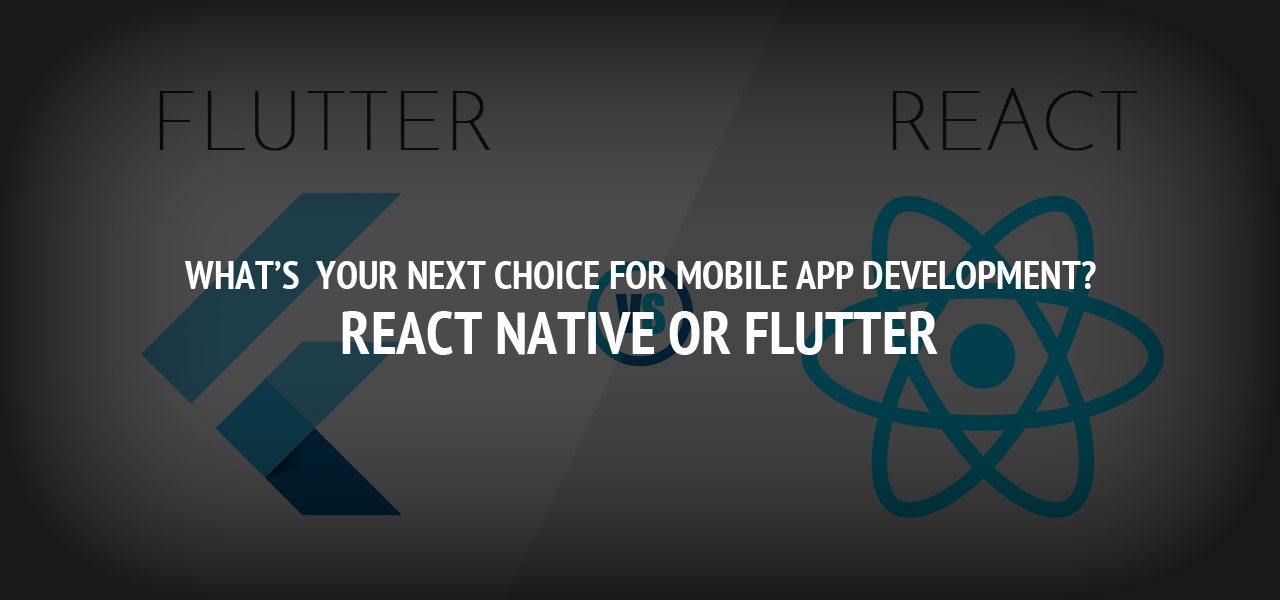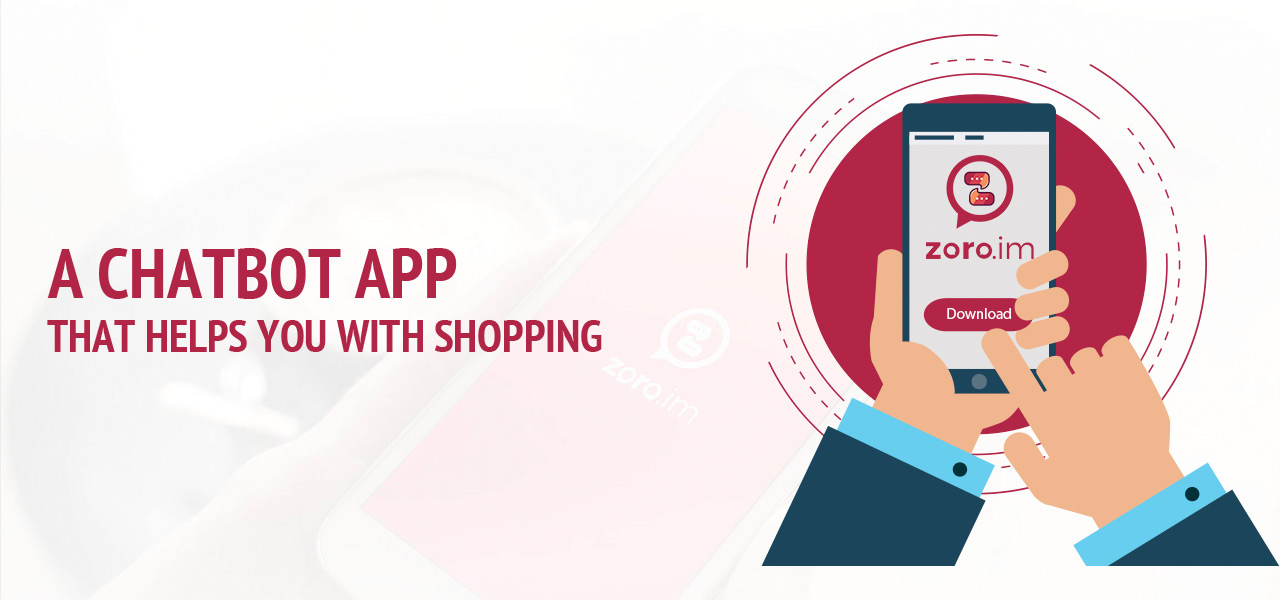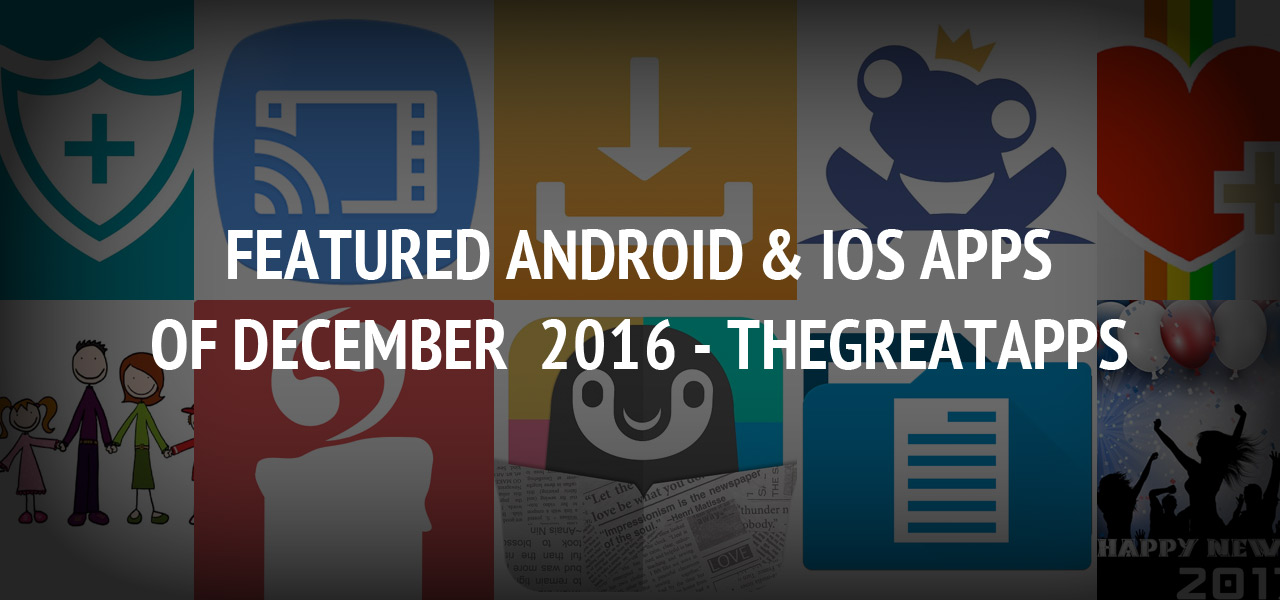What’s Your Next Choice for Mobile App Development?- React Native Or Flutter

We, developers, go super excited when gossip starts over mobile application development. Technology has the power of evolution and we developers are doing miracle using them.
But for every platform, we require to choose the best and powerful framework. Mobile application development is an art, and to master it you need to know which will be the best technology you can opt.
If you are planning to design a new mobile app, then first of all, you need to understand what language you need to implement. It is important to get out of the JAVA or Swift ...Zones and code beyond it. We know it's a little tiresome to adopt the right programming language for mobile development. Now it’s time to come out of the native coding language and get more innovative and productive.
Before selecting language we need to take care of some basic factors. The main factors which any programming language should have are:
- It should be cross-platformed;
- Open source software;
- Simple to understand, not complex;
- Able to maintain hardware integration.
Now you might be thinking about what other languages could make all the above factor possible? Okay now without playing technology puzzle let us know the two latest languages which have made it possible.
World’s two biggest names Google and Facebook have launched their hot languages React Native and Flutter. Reactive Native was released by Facebook in 2015 whereas Flutter by Google came up in the programming market in 2017. And we know that they have reshaped mobile app designing.
In the upcoming section of this content, you are going to learn more about React Native and https://myappgurus.com/services/flutter-app-development/. Also, you will be able to gain the benefits of owning these languages. And if you have any doubts when it comes to choosing any of these will be resolved.
Now let us go into the nutshell of these programming languages and learn about them.
React Native: The Future of Hybrid Apps
Did you just clicked a thought in your mind about “The future of Hybrid Apps”? If yes, then don’t worry we are going to justify it in this section.
React Native is open-source software for mobile app development. It has a Javascript framework for writing integrated programs to develop apps for Android and iOS. React Native proffers features like camera, location,.., etc to the mobile. This language is independent of HTML or CSS. Thus the app designed by Native is not web apps, they are the ‘real apps’.
If we talk about the requirements it runs on every operating system be it Windows, Mac OS or Linux. In the future, the apps of React Native has a target to run on the iOS 9.0 and Android (4.1) (API 16).
Structure of React Native
We know an example of any programming language delivered by "Hello World". Let us see the syntax of React Native.
import React, { Component } from 'react';
import { AppRegistry, Text } from 'react-native';
export default class HelloWorldApp extends Component {
render() {
return (
Hello world!
);
}
}
// Skip this line if using Create React Native App
AppRegistry.registerComponent('HelloWorld', () => HelloWorldApp);
// The ReactJS code can also be imported into another component with the following code:
import HelloWorldApp from './HelloWorldApp';
(Source: https://en.wikipedia.org/wiki/React_Native)
Does it look clear and logical?
Now let us see some of the importance of React Native application development.
Key Benefits
- React Native applications run on both Android and iOS. It contributes a powerful UI design framework.
- The native components of this coding language are reusable. The components used in the mobile application can also be used in agile to develop typical web applications without using HTML and CSS.
- If you are willing to add components in the code for any other application, you need not rewrite the program. Also if you have any existing hybrid application built with Cordova or Ionic, it is easy to plug in with the Native code.
- It is one of the best Javascript frameworks. It includes the library functions which have Flexbox CSS styling.
- React Native applications takes less memory space. The best thing about this language is that it is compatible with the third-party plugin.
Top Companies using React Native
The Fortune 500 companies have started executing this brilliant SDK for their application development. Amongst all of them, these are the top brands who use React Native are:
- Wix
We know after reading about React Native, now you are curious about Flutter. Let us get into it.
FLUTTER: The Future of Expressive Apps
Flutter is also an open source software for mobile application development framework. As we know it is released by Google, it will become a treasure for all the developers reading this.
The major framework architecture of Flutter includes:
- Dart Platform
- Flutter Engine
- Foundation Library
- Design-specific widgets
Flutter supports applications for iOS and Android. It has a bundle of libraries for graphics and animations which makes the apps look alluring. The coding is basically written in Dart language, invented by Google.
It works with the actual code and also provides extensions to the application model.
Flutter allows you to work comfortably with any development tool. It also allows you to edit the plug-ins of both the Visual Studio Code and IntelliJ/Android studio.
Structure of Flutter
Let us see a sample code of Flutter and understand the basic syntax.
import 'package:flutter/material.dart';
void main() => runApp(new HelloWorldApp());
class HelloWorldApp extends StatelessWidget {
@override
Widget build(BuildContext context) {
return new MaterialApp(
home: new Material(
child: new Center(
child: new Text("Hello world!"),
),
),
);
}
(Source: https://medium.com/@husayn.hakeem/flutter-hello-world-d15032356c81)
Now you have observed the structure of the Flutter. Can you relate it a bit with any other language? If yes, then you are right! The code body and syntax are quite similar to C++. It is because the Flutter Engine is written in C++.
Is it easy for you now to grasp this technology?
Key Advantages
- Flutter allows for faster and dynamic application development. Since it renders you to bring changes straight in the apps, it is so-called known as Hot Reload. You can fix the bugs, add features, and do any kind of experiment.
- It provides one code for two platforms because of its own widgets and designs. Isn't it a surprise for all the developers?
- It runs smoothly. It has advanced features still every app you will develop will also run on older versions of Android and iOS.
- It runs on the newest versions too, such as Jelly Bean and iOS 8.
Comparison At A Glance!
Now that we have known React Native and Flutter in brief, it is very easy for us to understand the differences.
➔ React Native gives out the fast UI packages whereas Flutter lacks behind in the speed of application.
➔ The stability of the flutter still needs to get improved than the React Native. Reactive Native builds up a set of better application with a rigid platform it helps the app to be more secure and flawless.
Concluding the Difference…
There is no doubt that the technologies by Facebook and Google are competing at a level of application development. But still, Flutter is a young technology which is used by top companies. And we suggest you learn and execute React Native for developing your own mobile app.
About The Author
Related Blog
View All-
A Chatbot App that helps you with Shopping
In this fast pace life, People find it difficult to get time for proper shopping. Online shopping has always being a saviour for such people. In fact, online shopping is always reliable and time-saving and people love that. Over the last few years shopping online ...
-
Featured Android & iOS Apps of December 2016 - TheGreatApps
Don't Miss These Best Apps of December 2016 2016 is gone! But we listed Best Apps of December 2016. There are lots of Apps and Games are available on Play Store and App Store but it is very difficult to Find Best Apps & Games. Check out the list ...







